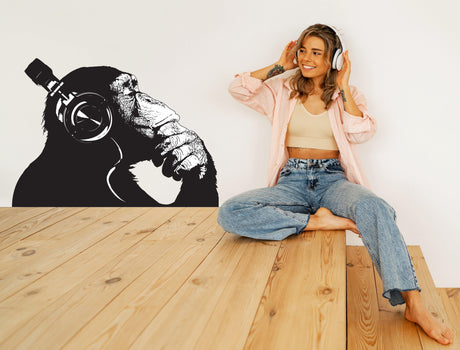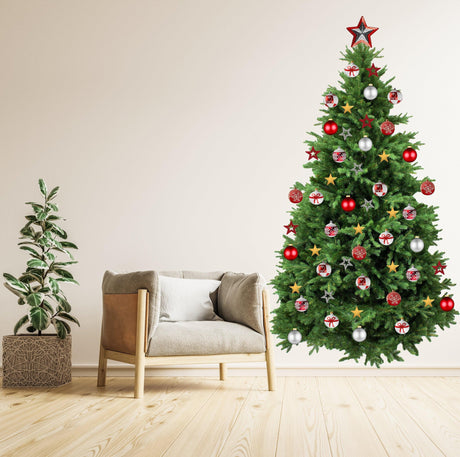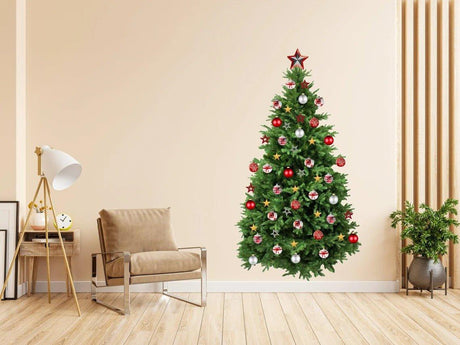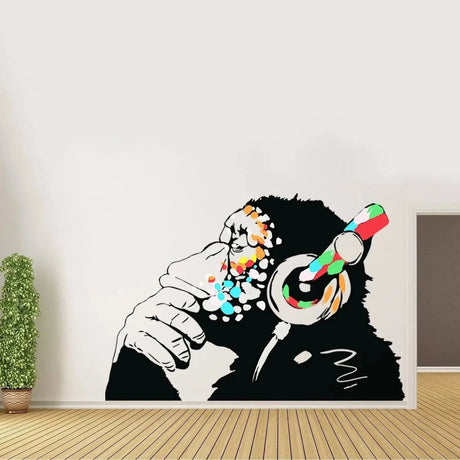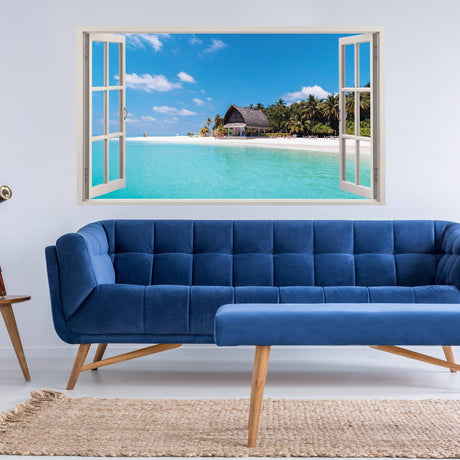Decorating a baby room is about more than choosing nice colors. You need a calm, gentle space where your child can sleep, grow and explore without overstimulation. At the same time, every parent wants the room to feel warm and personal. Wall decals help you shape the style of a nursery without repainting or making permanent changes. They are easy to apply, safe for smooth walls and perfect for renters. This guide explains how to decorate a nursery with baby room wall decals, how to choose non toxic wall decals, and what to check before you order. You’ll find simple rules, design tips and practical steps you can use right away.
What are baby room wall decals and why do parents love them for nurseries?
Baby room wall decals are removable stickers made for painted walls, furniture, doors and windows in a nursery. They let you change the mood of the room quickly and safely, without paint, drills or complex renovation. Many parents use decals to build a soft, coordinated theme while keeping the room easy to update as the baby grows.
Wall decals work well because they give full control over the layout. You don’t need to commit to a big mural or a permanent paint job. You place decals piece by piece, check how the wall looks, and adjust the composition until it feels right. If you want to change the theme later, you remove or replace just a few elements.
Decals are also ideal for small nurseries. They add visual depth without taking up floor space. A vertical pattern of stars can make the room feel taller. A horizontal line of pastel animals behind the crib can frame the sleeping area without making the wall heavy.
Another useful detail is flexibility. A soft pastel piece works for newborns, while brighter themes help toddlers explore the world. With decals, you can update the room in minutes instead of repainting or buying new furniture.
How do peel and stick decals work on typical nursery walls?
Peel and stick decals use a gentle adhesive layer that bonds to most smooth walls. You clean the surface, peel the backing, place the decal, and smooth it down with your hand or a cloth. On regular latex and acrylic paints, decals hold well and stay in place for years.
On heavily textured walls, the adhesive touches only the raised parts, so the bond may be weaker. If your nursery has textured paint, test a small sample first. On smooth or lightly textured walls, decals work reliably and remain flat.
How to make sure your wall decals are truly non toxic and baby safe
Non toxic wall decals are made with safe materials and inks that do not release harmful chemicals. This matters in a nursery because babies spend many hours sleeping and breathing close to the walls. When you choose decals for a baby room, look for clear, specific safety details instead of vague “eco-friendly” wording.
The first thing to check is the material. Safe decals are often PVC free or use low-plasticizer films. The inks should be water based or low VOC. Good nursery decals have almost no smell right out of the package. If reviews mention strong odor, that product is not ideal for a baby room.
Placement also matters. Anything near the crib or changing table must adhere firmly. Avoid loose elements that a baby could reach and peel. Safe design is about chemical content and long-term behavior.
Which materials and certifications matter for non toxic wall decals?
Look for terms like PVC free film, phthalate free materials and water based inks. These indicate that the product avoids the most common sources of toxins. A note about low VOC printing is also helpful.
Some brands share compliance with EU child product standards or general indoor air quality benchmarks. Even if wall decals aren’t classified as toys, these references show care in production. For parents, the safest choice is simple: non toxic wall decals with clear material descriptions, low odor and suitability for nurseries. When a product listing on Decords includes these points, it is designed with babies in mind.
How to choose designs and colors that keep your baby room calm and cozy
Soft design helps the baby stay relaxed and encourages better sleep. Wall decals can shape the mood of the room when you choose colors and themes that feel balanced. The goal is not to fill every empty space but to build a gentle atmosphere.
For newborns, use pastel tones and large, simple shapes. Clouds, moons, stars and soft animal silhouettes work well because they add structure without creating visual noise. Colors like beige, cream, sage green and muted blue blend naturally with crib bedding and curtains.
Create one accent wall behind the crib or changing table. This becomes the main visual area. Keep other walls lighter so the room stays calm. You can repeat small elements like stars or dots on the opposite side to connect the theme.
For toddlers, add more story elements - animals, trees, rainbows, balloons. Use them in small groups instead of covering the whole wall. This keeps the room tidy and prevents overstimulation.
What decal themes work best for newborns and for toddlers?
Newborn-friendly themes include clouds, moons, mountains, simple animals and abstract shapes in soft colors. The focus is on comfort. When the child is older, you can introduce learning-oriented themes: ocean animals, forest scenes, letters or numbers. These themes support early curiosity without turning the nursery into a classroom.
How to prepare nursery walls and apply baby room wall decals step by step
Correct wall preparation helps decals last longer and stay safe near the crib. If you painted the room recently, let the paint cure fully according to the paint brand’s instructions. Many paints need up to two weeks before they are ready for decals. A fully cured wall ensures proper adhesion.
Clean the wall with a dry or slightly damp cloth. Remove dust but avoid oily cleaners. Dry the wall completely. Before peeling the backing, plan the layout. Use painter’s tape to test positions and check the balance of the composition.
After planning, you can apply the decals.
How to apply wall decals in a nursery:
- Start with the largest decal to set the main focus.
- Peel a small top section of the backing and position the decal using your guide marks.
- Smooth the top part, then peel the rest of the backing slowly while pressing the decal downward.
- Push bubbles out from the center outward with a cloth.
- Add smaller decals around the main image with even spacing.
Let the decals rest for 24 hours before cleaning the wall or touching them too much. In a baby room, check edges now and then to ensure everything stays flat.
How to remove or reposition decals without damaging the paint
To remove decals, peel them slowly from one corner at a low angle. Warm the area slightly with your hand if needed. On good paint, decals usually come off cleanly. If the paint flakes, it often means the wall was not primed well. Repositionable decals can be moved within the same session if the adhesive stays clean.
Practical shopping tips: how to pick safe baby room wall decals on Decords
Before you order, check that the product is designed for nurseries and clearly described as safe. The best listings mention non toxic wall decals, PVC free film, water based inks or suitability for baby rooms. This tells you the brand understands the needs of young families.
Then review the size options. Measure your wall and decide whether you want one large centerpiece or a scattered pattern. Many parents choose one large motif behind the crib and smaller pieces on the opposite wall. It is often better to choose a set slightly larger than you think you need, so the room does not look empty.
You can use a simple checklist:
Checklist before buying baby room wall decals:
- The listing mentions nurseries or kids rooms.
- Materials are described as non toxic (PVC free or phthalate free).
- Inks are water based or low VOC.
- Sizes and measurements are clear.
- There are lifestyle photos or customer images.
Once safety and size are clear, choose a theme that matches your crib, textiles or rug. A small color connection—like a matching tone in a blanket and a wall decal-makes the room feel balanced. Ordering from a store that ships to the US and Europe gives flexibility if you move or want to order matching decals later.

